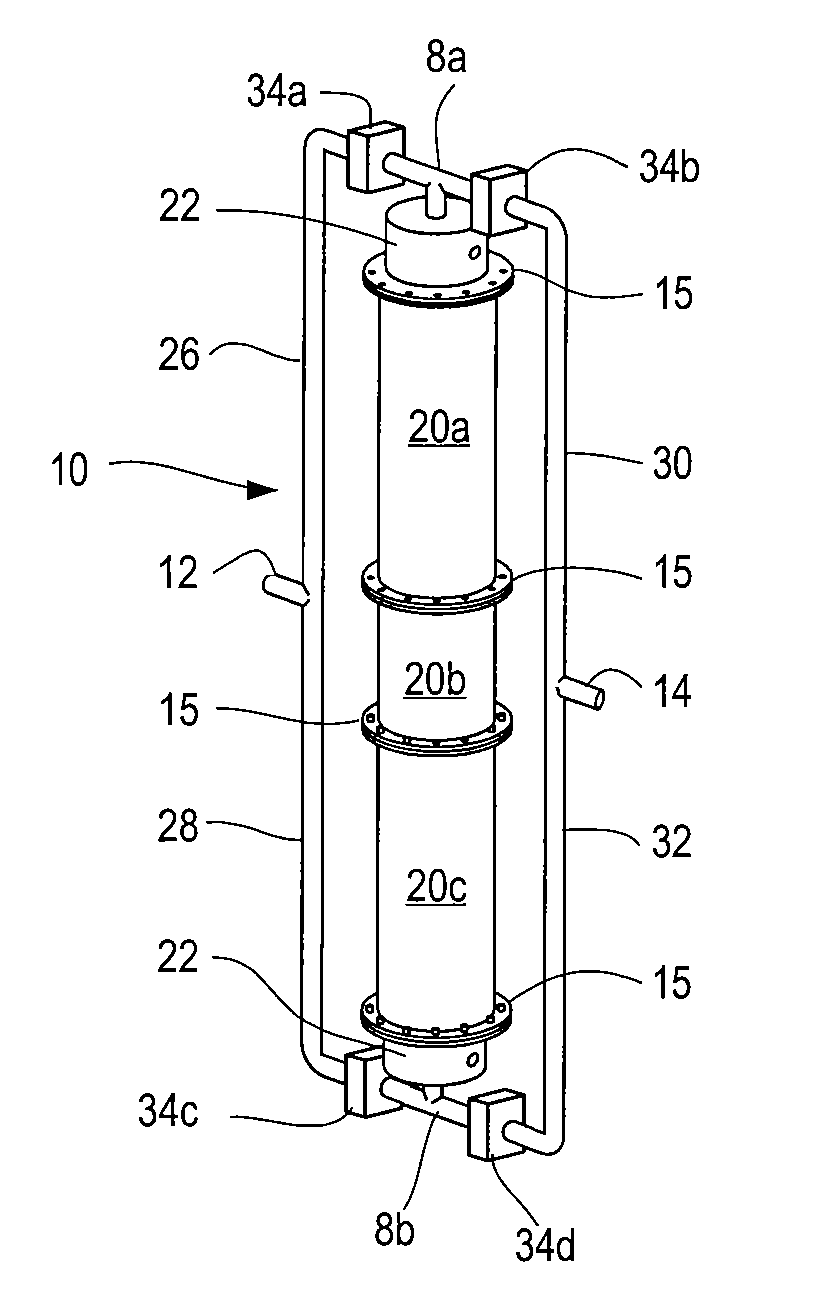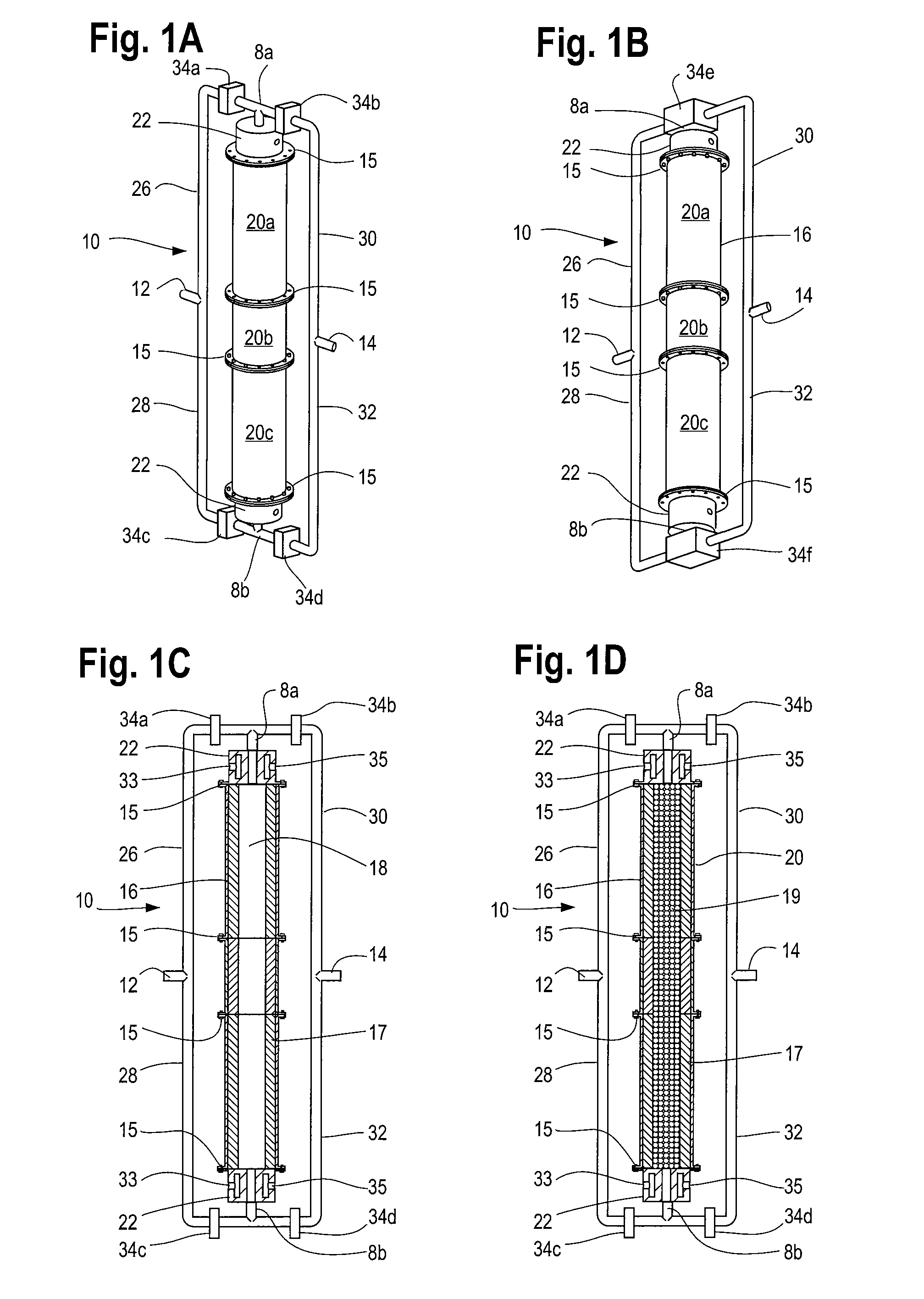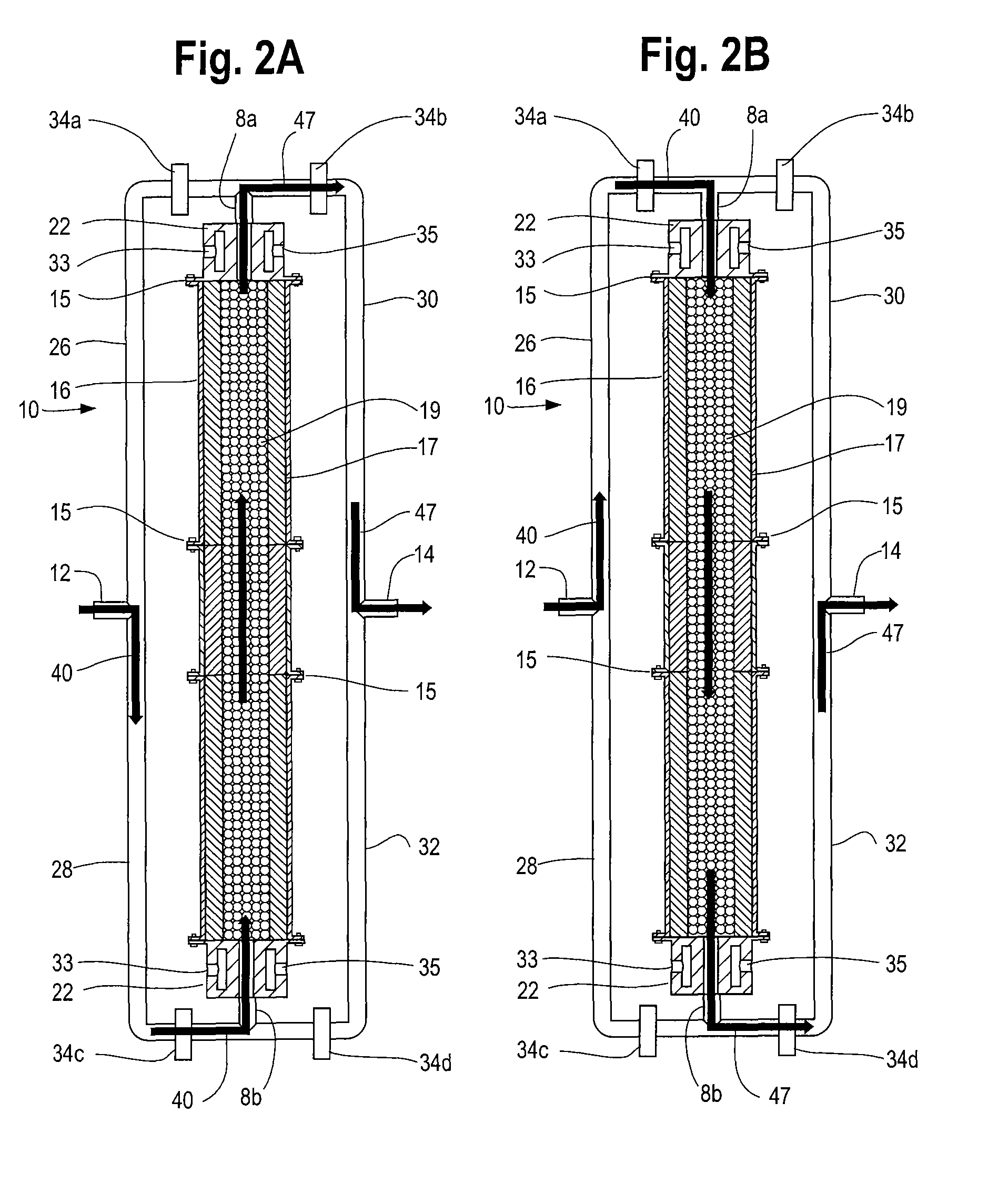Reformation of hydrogen-containing fluids in a cyclic flow reactor
a hydrogen-containing fluid and cyclic flow reactor technology, applied in the direction of liquid chemical processes, gas-gas reaction processes, liquid-gas reactions of thin-film type, etc., can solve the problems of less common, less common, and the inability of ultra-rich mixtures to produce self-sustained flames, etc., to achieve reform reaction, increase the efficiency of the reactor, and high values
- Summary
- Abstract
- Description
- Claims
- Application Information
AI Technical Summary
Benefits of technology
Problems solved by technology
Method used
Image
Examples
example
[0096]Another method of the process comprises reacting an ultra-rich mixture of H2S and an oxygen containing fluid inside the reactor 10 for the purpose of obtaining a product mixture 47 containing substantially pure hydrogen. The reformation of H2S to hydrogen and sulfur presents certain challenges not encountered in hydrocarbon reformation. For example, as H2S has a relatively low heat content compared to other possible fuels, obtaining a very high temperature in the partial oxidation regime is not likely. More importantly, H2S reforming requires the reaction to reach near equilibrium conditions at high temperature to obtain high yield. The intrinsic recuperating mechanism of the inert porous media matrix 19 and the reactor's ability to create an isothermal high temperature volume rendered it a cost effective option for the reformation of H2S by providing the necessary residence time and temperature.
[0097]For H2S reforming, the H2S concentration of the ...
PUM
| Property | Measurement | Unit |
|---|---|---|
| porosity | aaaaa | aaaaa |
| porosity | aaaaa | aaaaa |
| diameter | aaaaa | aaaaa |
Abstract
Description
Claims
Application Information
 Login to View More
Login to View More - R&D
- Intellectual Property
- Life Sciences
- Materials
- Tech Scout
- Unparalleled Data Quality
- Higher Quality Content
- 60% Fewer Hallucinations
Browse by: Latest US Patents, China's latest patents, Technical Efficacy Thesaurus, Application Domain, Technology Topic, Popular Technical Reports.
© 2025 PatSnap. All rights reserved.Legal|Privacy policy|Modern Slavery Act Transparency Statement|Sitemap|About US| Contact US: help@patsnap.com



